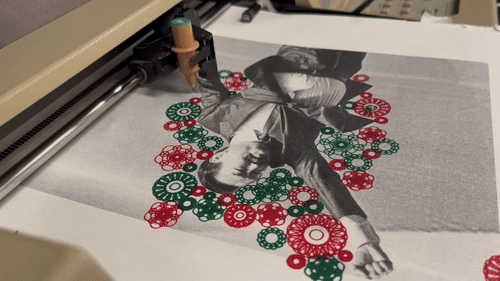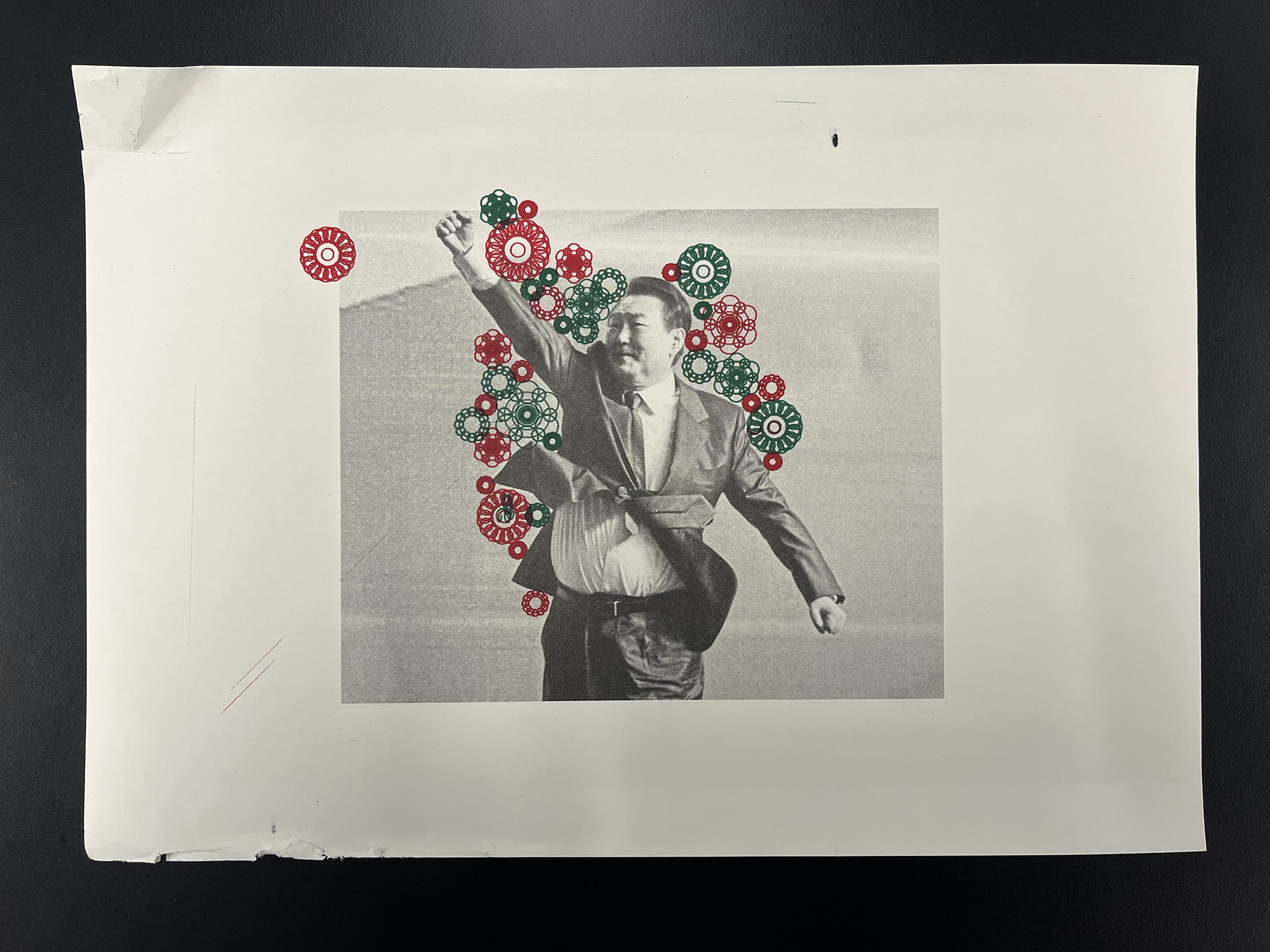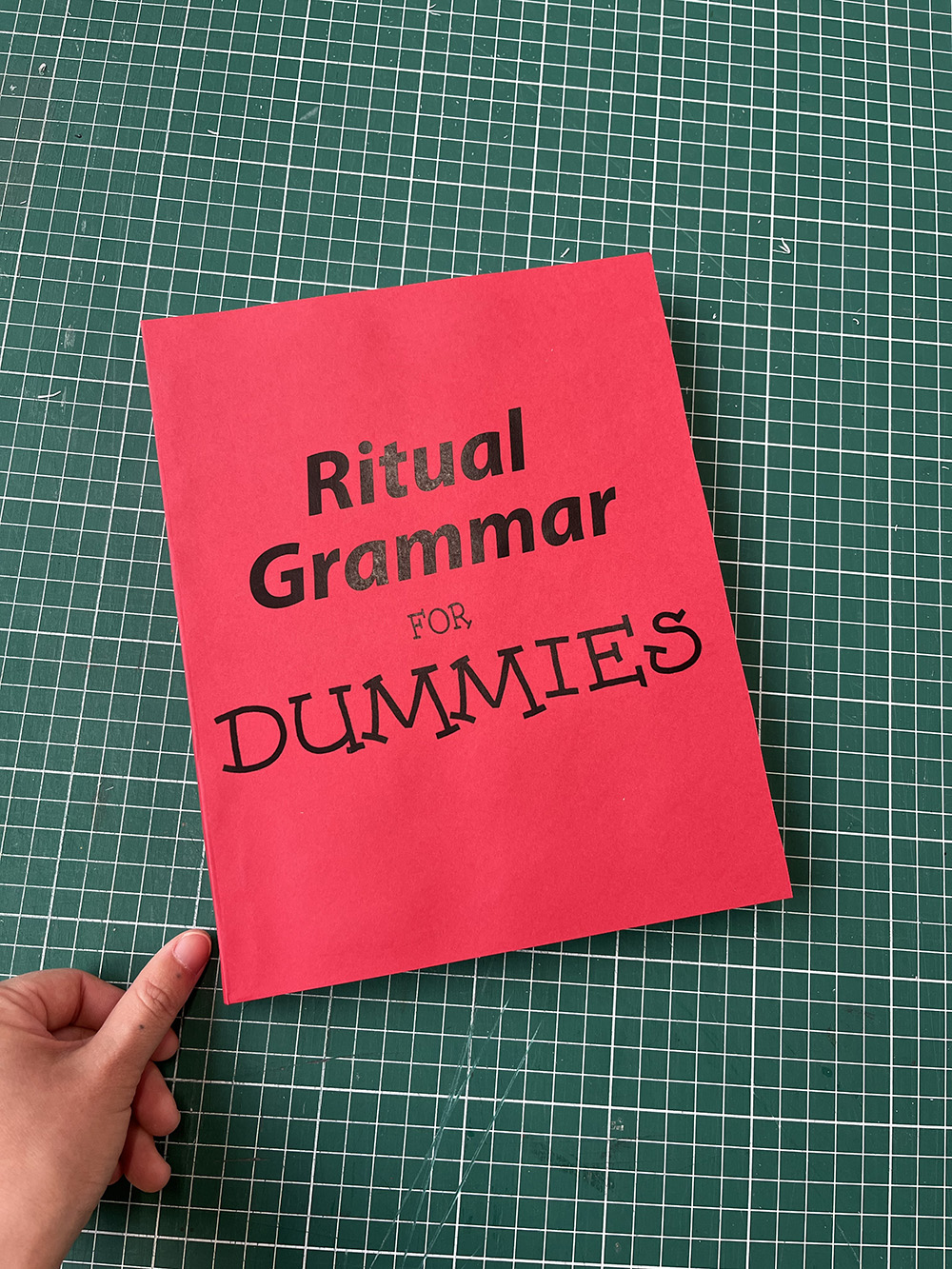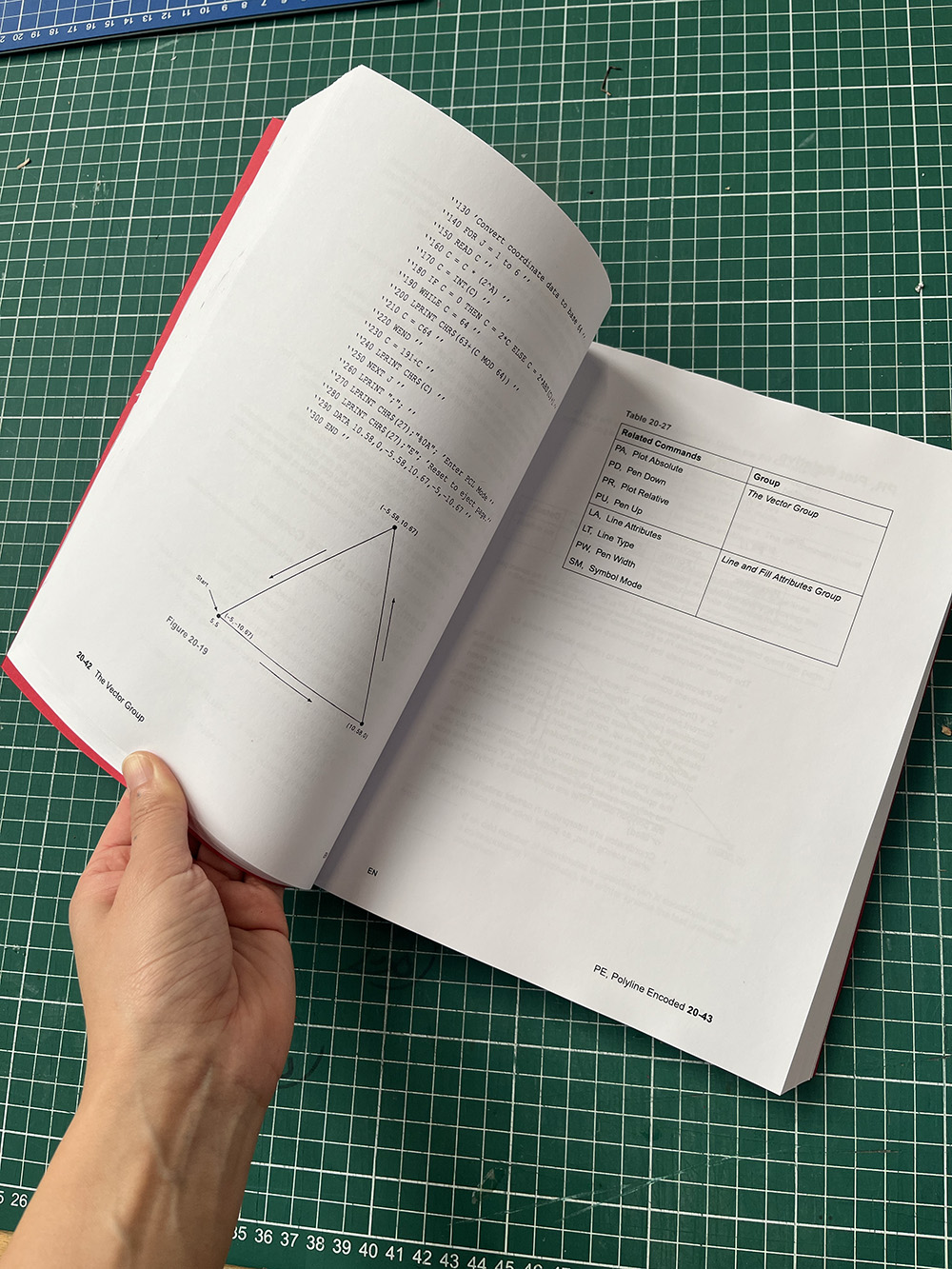
Put a spell on you
2025
Obsolete media witchcraft and poetry
About a year ago, I built up a significant amount of personal grudge against someone enough to consider putting a curse on him, and at the same time I wanted to automate the process to minimize my effort.
This page documents a series of experiments that attempt to perform curses using obsolete plotter machines (old HP series) and their command language, HPGL, as a kind of ritualistic grammar and a technical tool for cursing.
What's a curse?
Act of cursing, (at least the way I understood it) is an execution of will and declaration performed through official/unofficial rules and protocols and often carried out with heavy repetition. And it claims to alter the recipient’s reality as an outcome, whether it actually does so, or just imitates the form of doing so.
To understand how a curse interacts with reality, I need to distinguish it into two layers.
First, there are actual events or physical facts that happen in the world.
And second, there are ways those facts are experienced, narrated, and settled as “reality” by people. My interest here is related to the second layer, how certain versions of reality become convincing, not necessarily they are true but because they are executed.
From this point of view, curse has strange, liminal position in reality. It seem to function as an apparatus that tries to produce a kind of reality-effect (loose link to Barthes’ idea of ‘meaningless details that fabricate the feeling of reality’) through words, symbolic gestures, repetition, and witness/testimonials. A curse does not alter the reality directly, it stages the alteration by building a structure that looks and feels as if it might work. Its procedures are often very precise, codified, and repetitive, yet the outcome always remains uncertain. Because you can follow every rule, repeat every words, perform every gesture but the result is never guaranteed.
Indeed this is about the unstable relation between the execution and effect, how execution alone can create the feeling of reality without having to prove anything. Hence I chose to work with the old plotter machines as my accomplice to keep the efficacy deliberately uncertain.
--Description text-- --Description text-- --Description text-- --Description text-- --Description text-- --Description text-- --Description text-- --Description text-- --Description text-- --Description text-- --Description text-- --Description text-- --Description text-- --Description text-- --Description text-- --Description text--
Rapid Prototype 0.5
i tried to pen plot on the printed photograph of the recipient of my curse. honestly, it looks a bit ridiculous and i wasn't happy about it at all. mainly because i didn;t really have clear reasons for the decisions that went into this first sketch.


here i ended up drawing a bunch of flower-looking patterns made of circles around the recipient's silhouette, partly because with my lack of HP-GL and python knowledge, drawing bunch of circles was (and still kinda is) the easiest thing i could do. and i justified it by turning them into flower pattern, since flowers are a big reoccuring motif in shamanic performance/practice that i'm familiar with back home.
at the end, i bailed on it halfway through because it was taking way too long. but in the same time, i guess that's exactly the point of using old plotter as a ritualistic tool. the slow, fractious, noisy technology that creates the ritualistic tension.


i ran the plotter with SP0(no pen)command, followed up by LB(label)command which carries the curse in written english(its one of the few text mode that HP-GL supports), to make the pen holder to hover around the photo frame of the intended recipient and write 'ghost letters'. so there is a command and execution but what happens is then obviously, nothing physical is being written tjerefore this act left no visible trace, there are only witnesses of this performance, and the exact words and sentences that spelled out here are only known to me and the machine.
i suppose the initial idea of this prototype was to exercise one of the concepts that makes curse a curse. a curse is always accompanied by question(or doubt) whetehr it's actually worked or not, it's always a matter of belief and belief system is a key infrastructure of these things. so selecting 'pen zero' was a gesture to not leave a palpable trace and focus on the efficacy that relies on protocols and witnesses.
honestly i felt quite silly after this prototype also felt a bit lost. i'm trying to stay loyal to the mechanism of a curse and mimic its protocols,rules, and components, while deliberately excluding the core element of belief(which is kind of the whole point of using non-sentient, old machine to put a curse) can still stage what feels like a curse that is supposed to be convincing. but at the moment i'm little bit disoriented and confused about what is actually important here and how this can be connected to my research question. i need some straightening out to do.
Rapid Prototype 3,
Encrypted patterns
Rapid Prototype 4,
Recording with surveillance cam
Rapid Prototype 5